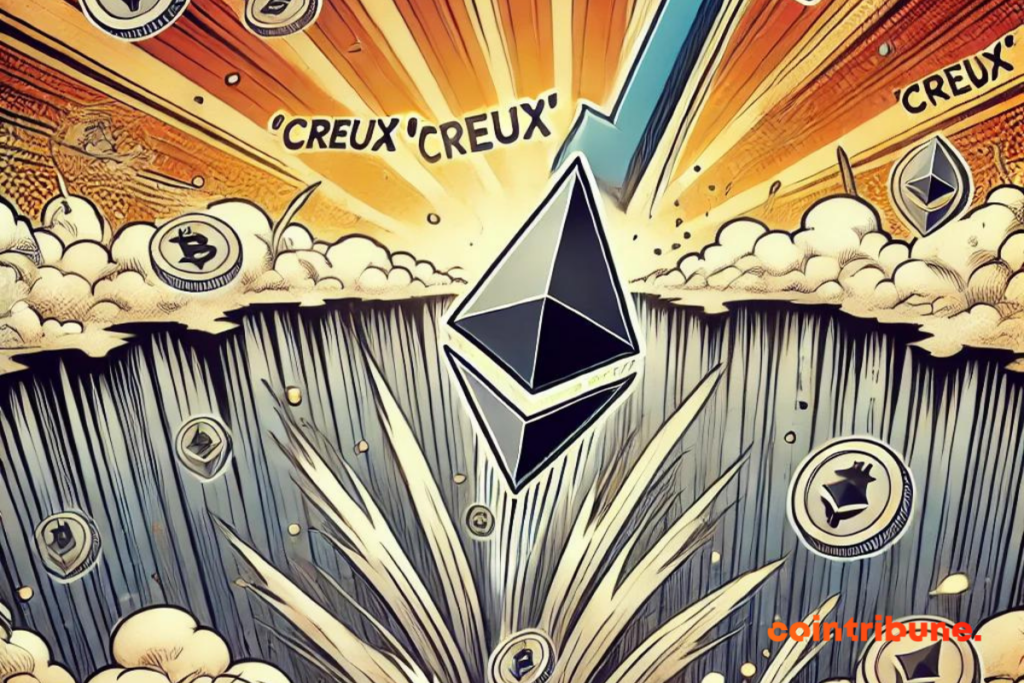Crypto: Ethereum Hits An All-time Low On Exchanges!
The year 2024 promises to be significant for Ethereum, the second-largest crypto in the market. In the midst of a whirlwind, Ethereum reserves on centralized exchange platforms have reached a historically low level, a phenomenon not observed since 2016. This drop in reserves comes as Ethereum price volatility draws considerable attention. But beyond the numbers, it’s the behavior of investors that intrigues: why this massive exodus from exchanges? A deeper analysis of this trend reveals a profound change in market dynamics.

Crypto Ethereum: reserves in freefall
Ethereum reserves on exchanges have been steadily decreasing since the beginning of 2024. According to Glassnode data, the amount of ETH held on platforms dropped from 14 million in January to around 11.7 million units in August.
This decrease is part of a trend that began in 2020, marking a gradual transformation of the market. While some might interpret this as a lack of interest in crypto, the reality is far more complex.
Ethereum’s price volatility has only intensified this trend. In March 2024, ETH was trading around $4,000 before experiencing significant drops in July.
Despite this, the exodus of Ethereum from exchanges has not slowed, signaling investors’ desire to withdraw their assets from centralized platforms.
This shift indicates a move towards long-term investment strategies, with many users preferring to hold their assets off the exchanges.
This phenomenon reflects a trend observed across the entire crypto ecosystem: the rise of decentralized finance (DeFi) and the development of staking solutions encourage more and more investors to move their assets.
Users are now more inclined to secure their ETH themselves or engage them in DeFi protocols where they can generate passive yields while retaining control of their funds.
Staking and DeFi: drivers of the exodus from exchanges
Ethereum Staking, popularized by the introduction of Ethereum 2.0, plays a key role in this trend.
By moving their ETH to staking nodes, investors participate in securing the network while receiving rewards.
As evidenced by data from Glassnode, this mechanism encourages long-term holding and naturally reduces the amount of crypto available on exchanges. Investors are no longer just waiting for a simple price increase: they seek to grow their assets outside traditional exchange platforms.
At the same time, decentralized finance (DeFi) is attracting an increasing number of users. Transferring funds to private wallets or DeFi platforms allows access to a range of decentralized financial services, such as lending, borrowing, or peer-to-peer exchanges.
This evolution strengthens users’ positions in the crypto ecosystem, offering them greater autonomy and diversification of income sources. Consequently, the role of centralized exchanges is gradually eroding in favor of increasing decentralization.
Finally, security and regulatory concerns also encourage the withdrawal of funds from exchanges.
Hacking incidents and restrictions imposed by certain jurisdictions reinforce the idea that keeping assets on centralized platforms represents a risk. The adoption of hardware wallets and other private custody solutions underscores this awareness.
Maximize your Cointribune experience with our "Read to Earn" program! For every article you read, earn points and access exclusive rewards. Sign up now and start earning benefits.

Fascinated by Bitcoin since 2017, Evariste has continuously researched the subject. While his initial interest was in trading, he now actively seeks to understand all advances centered on cryptocurrencies. As an editor, he strives to consistently deliver high-quality work that reflects the state of the sector as a whole.
The views, thoughts, and opinions expressed in this article belong solely to the author, and should not be taken as investment advice. Do your own research before taking any investment decisions.